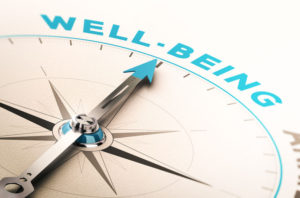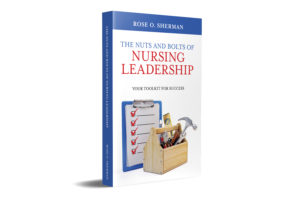By Rose O. Sherman, EdD, RN, NEA-BC, FAAN
Nurse Mental Health and Well-Being are the top challenges reported by nurse executives today in the recent AONL survey. These concerns are well-founded. Organizations are finding that the traditional methods of promoting resilience are not working in the current environment. Many nurses are not availing themselves of EAP services out of fatigue or to avoid stigma. Yet, at the same time, nurse well-being scores as measured on ANA pulse surveys are concerning. Part of the challenge is that many organizations rely on their wellness programs to help staff achieve well-being. Wellness and well-being are not the same.
In their work, Gallup researchers define Wellness as describing a healthy lifestyle beyond acute illness. It refers to a state of physical health in which people have the ability and energy to do what they want to do in life without chronic suffering. In contrast, Well-being encompasses the broader holistic dimensions of a well-lived life. Although there are other definitions, Gallup’s global research has found five elements of wellbeing that add up to a thriving life:
- Career wellbeing: You like what you do every day.
- Social wellbeing: You have meaningful friendships in your life.
- Financial wellbeing: You manage your money well.
- Physical wellbeing: You have the energy to get things done.
- Community wellbeing: You like where you live.
To address well-being, looking at physical and or mental wellness is not enough. The dimensions above need to be considered and play a key role in how staff evaluates their own well-being. If a nurse is experiencing serious financial issues in her family life as an outcome of COVID, she may evaluate her well-being at his/her current employment place as not being good. It is driving some movement to travel and agency positions that we see today in the workforce. This is very frustrating to some nurse leaders who have not experienced this in the past.
Gallup also points out that well-being also plays a crucial role in how younger nurses are viewing employers. Below is an interesting graph of what matters to each generation today.
| Young Millennials & Gen Z: 1989-2001 | Older Millennials: 1980-1988 | Gen X: 1965-1979 | Baby Boomers: 1946-1964 |
| 1. The organization cares about employees’ wellbeing. | 1. The organization cares about employees’ wellbeing. | 1. The organization’s leadership is ethical. | 1. The organization’s leadership is ethical. |
| 2. The organization’s leadership is ethical. | 2. The organization’s leadership is ethical. | 2. The organization cares about employees’ wellbeing. | 2. The organization cares about employees’ wellbeing. |
| 3. The organization is diverse and inclusive of all people. | 3. The organization’s leadership is open and transparent. | 3. The organization’s financial stability. | 3. The organization’s financial stability. |
Gallup’s work highlights a need for organizations to be more intentional and holistic in assessing how to meet the well-being needs of staff best. This will be essential moving forward into a staffing landscape that will be much more competitive.
References
Pendell, R. (March 22nd, 2021). Wellness versus Well-Being: What is the Difference. Gallup Workplace Articles.
© emergingrnleader.com 2021
Launch 2021 by giving your leadership team the gift of a highly rated webinar – Nursing Leadership in 2021: Rebooting after a Life-Quake A Nursing Leadership Reboot Workshop
Read the Nurse Leader Coach – Available at Amazon and Other Book Sellers.
Now Available to Strengthen Your Leadership in 2021 – The Nuts and Bolts of Nursing Leadership: Your Toolkit for Success




 LinkedIn
LinkedIn Instagram
Instagram